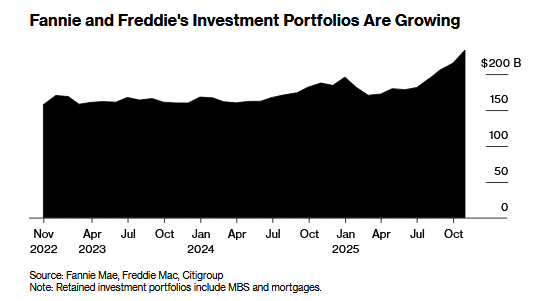Overview: The US dollar is narrowly mixed against the G10 currencies. Stronger than expected Australian retail sales helped steady the currency after the soft inflation data took it down. Sterling has also steadied after it suffered its largest loss yesterday (~0.9%) in over a month. Sweden's 25 bp rate hike has not given the krona much of a lift. Central European currencies lead the emerging market currencies higher, while the PBOC set the dollar's reference rate lower than expected. Still the yuan is softer.
Equities in Asia were mixed, but the Europe's Stoxx 600 is posting gains for the third consecutive session. US large banks passed the Fed's stress test, and some good earnings news is helping US index futures post modest gains. Benchmark 10-year bonds yields are mostly 4-6 bp higher in Europe and the US 10-year Treasury yield is about five basis points higher near 3.76%. Gold remains softer and testing the $1900 area, which it has not traded below since mid-March. August WTI recovered from almost $67 yesterday to test $70 today where is has stalled.
Asia Pacific
Japan reported a stronger than expected recovery of retail sales in May. Instead of rising 0.8% as the median in Japanese retail sales rose 1.3% after a 1.1% decline in April. Japan's retail sales have risen by an average of almost twice last year's pace and have been bolstered by higher prices. Still, Japanese consumption rose 2.1% in Q1 (real, annualized). It is moderating here in Q2 and is consistent with Q2 GDP slowing from 2.7% (annualized in Q1) to around 1.0%. Tomorrow, Japan reports May industrial output (median forecast in Bloomberg's survey is for a 1.0% decline, the first since January) and labor market (steady) and the fourth consecutive year-over-year decline in housing starts. But the most important data point is Tokyo's June CPI. The risk is that the headline and core measures tick up, but that the measure that excludes fresh food and energy rises to a new cyclical high. Separately, Australia's retail sales rose 0.7% in May, well above expectations (0.1%) and the strongest in four months. The report helped offset yesterday's softer inflation reading. The futures market is pricing almost a 29% chance of a hike next week, up from less than 20% at yesterday's close.
China reports its PMI the first thing tomorrow. The manufacturing PMI likely remained below the 50 boom/bust level after holding above it in Q1. The non-manufacturing PMI likely slowed for the third consecutive month but remained above 50. That same is probably true for the composite. Meanwhile, the investors and businesses are eager to get more government stimulus and the focus has shifted to the Politburo meeting at the end of July.
The dollar edged to marginal new seven-month high against the yen near JPY144.70. The greenback is climbing the five-day moving average and has not closed below it since June 9. It is slightly above JPY144.00 now. New session highs seem likely in the North American session, but the market may be hesitant about broaching JPY145 without fresh fundamental cover that could come from tomorrow's US PCE deflator, but then the month-end and what for many in the US will be a four-day weekend. The Australian dollar found support slightly below $0.6600 but stalled near $0.6630. A move above there could see a return to $0.6660-80. However, the technical tone remains fragile, though its 0.20% gain today puts its atop the G10 currencies. A close below $0.6600 could spur another cent loss in the coming days. After seemingly pulling back yesterday, the PBOC again sent a signal via the dollar fix today that is trying to stabilize the yuan. The dollar's reference rate was set at CNY7.2208, well below the median projection of CNY7.2519. Given that the dollar can move in a 2% band around the fix, the lower setting limits its upside. Nevertheless, the dollar is firm against the yuan, above CNY7.24, though it held below yesterday's high (almost CNY7.2550).
Europe
There is much interest in tomorrow's initial estimate of the eurozone's June CPI. Ahead of it, Germany and Spain reported their figures. Spain's harmonized measure rose by 0.6% in June after falling 0.1% in May. Due the fact that last June's 1.9% jump drops out of the 12-month comparison means translates into a sharp drop in the year-over-year rate to 1.6% from 2.9%. This probably overstates the improvement. In the H1 23, Spain's harmonized CPI rose at an annualized rate of 5.2%. The core rate eased to 5.9% from 6.1%. Recall that Italy reported yesterday, and at an annualized rate, its harmonized CPI rose 1.2%. German states have reported (0.2%-0.3% month-over-month), and the national figure is due shortly. Price pressures are more resilient in Germany and price pressures rose this month. A 0.4% month-over-month increase in the harmonized measure would bring the H1 23 annualized pace to around 6.8%.
Sweden's Riksbank hiked the repo rate 25 bp to 3.75%, after two consecutive 50 bp earlier this year. The swaps market favored a quarter-point move but had about a 30% chance of a larger increase discounted. Riksbank officials recognize sensitivity of inflation to the exchange rate. Over the past 12-months, the krona has fallen by around 9.5% against the euro and sterling. It has fallen to a record low against the euro this month and to nearly 16-year lows against sterling. Indeed, on the rate hike itself the krona slipped to a marginal new record low against the euro. The Riksbank is seen in a cruel dilemma. It wants to combat inflation (9.7% year-over-year headline and 8.2% underlying excluding energy), but the is aware of the stress in the housing and commercial real estate sector will likely be exacerbated. The central bank announced it was boosting its bond sales from currently selling SEK3.5 bln (conventional bonds and inflation-protected securities) to SEK5 bln a month. Officials signaled at least one more hike this year.
The euro was sold to nearly $1.0880, a new low for the week, but above last week's low near $1.0845 seen on the back of the disappointing PMI. The euro recovered but stalled near $1.0920 in the European morning. Nearby resistance is seen around $1.0940. Sterling fell from around $1.2750 yesterday to almost $1.2600. Today, it is pinned near yesterday's lows and has not been above $1.2655. Unless sterling recovers soon, the five-day moving average cross below the 20-day moving average next week for the first time since June 5. While the ECB and Fed look set to hike rates next month, the Bank of England does not meet until August and the market is already pricing in around an 80% chance of another 50 bp hike, suggesting most of the supportive news is already discounted.
America
Today's US data pales in comparison to tomorrow's. Today features another revision to Q1 GDP. The market is more interested in Q2 GDP and the Atlanta Fed's tracker eased to 1.8%, which is slightly faster than Q1. Weekly jobless claims have risen lately, but the labor market focus is on next week's nonfarm payroll estimate. The private sector is seen growing around 200k jobs this month, which is below this year's average through May of 248k. Job growth is slowing but is still sufficiently strong as not to stand in the way of a Fed hike next month. Tomorrow, the US reports personal income and spending (the latter looks to have slowed to 0.2% after surging by 0.8% in April), but more importantly, the deflators. The headline is expected to slow to be 4% for the first time since April 2021, while the core measure is forecast to be steady at 4.7%.
It has taken the market about two weeks since the FOMC signaled two more hikes were likely this year to meet the Fed halfway. That is to say that the Fed funds futures has now fully pricing in one more hike. The January Fed funds futures contract implies a year-end effective rate of 5.33%. This is about 25 bp more than the current effective average. What will it take to get the market to price in the other half the Fed has indicated? First, we suspect it is a question of time in the sense that there is plenty of data between next month's meeting and the next one (Sept 19-20). Second, there is also scope for additional shocks. US large banks passed the Fed's stress tests, but new capital requirements and changes to supervision are still expected. Fed Chair Powell said yesterday that bank stress, and the appreciation that credit availability works with a lag, informed his decision to hold rates steady. Third, pressures from the commercial real estate market are widely seen as a risk, especially for many regional banks.
The US dollar posted a key reversal against the Canadian dollar on Tuesday after setting a new nine-month low (~CAD1.3115). Follow-through buying lifted the greenback to slightly above CAD1.3275 yesterday. It drew closer to CAD1.3280 today, to approach the 20-day moving average for the first time since June 1. The next upside corrective target is in the CAD1.3300-20 area. Support is seen near CAD1.3240. Meanwhile, the greenback is going nowhere quickly against the Mexican peso. It is moving sideways in its trough. This week's range has been roughly MXN17.0460 to MXN17.18. Given the carry, sideways movement is sufficient to keep the peso bulls engaged.
Tags: #USD,Australia,China,Currency Movement,EMU,Featured,federal-reserve,inflation,Japan,newsletter,Sweden,US





























